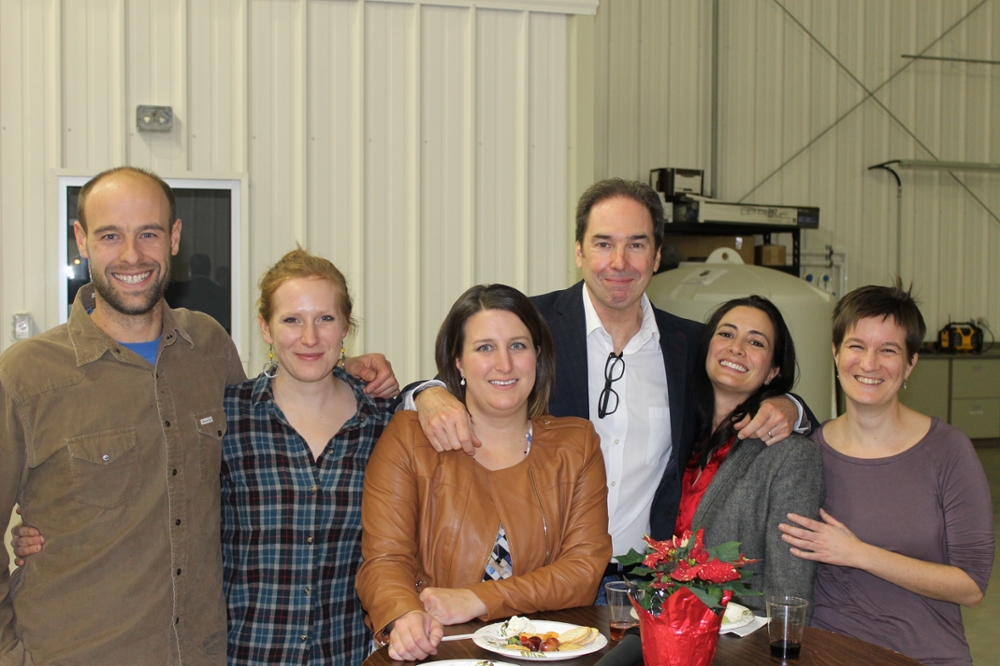
MOST facility prepares to open its doors
This article originally appeared in the Fall 2015 edition of our newsletter Water News
By HenryTye GlazebrookThe latest addition to the U of S’s commitment to research is entering its final days of construction, and GIWS staff, faculty and students recently celebrated the impending unveiling of the Mine Overlay Site Testing (MOST) facility.
GIWS personnel gathered December 4th to commemorate the end of exterior construction on the MOST facility, a research station specializing in the development and commercialization of innovative mine waste cover systems. The centre, which is expected to be operational in early 2016, is the first structure of its kind in Canada.
“We’re celebrating that we have the building completed, but we’re not actually going to have the official ceremony yet,” said Veva McDonnell, business development officer for the facility, adding that an official ceremony will take place once structures in the interior of the building have finished being installed and research officially has begun.
“We don’t have all the inside of the building prepared quite yet. We’re going to have a rainfall simulator, we’re going to be doing a lot of things like that inside.”
When mines cease operations, intricate cover systems are put in place to return the area to its natural conditions and prevent waste materials from seeping into the surrounding environment or beyond. The MOST facility is designed to save time and money by allowing researchers and mining companies to mimic the strain that will be placed on these covers on a small, controlled scale prior to their installation in the field.
“They go in and spend all this money — they put maybe membranes and soil on top, and plants — and they hope that it works. Now you might have roots that go through the membrane or animals that burrow in, making holes, and these things fail. The covers don’t perform the way that they were supposed to,” McDonnell said.
“We can do all of that testing in our research facility ahead of time. We can accelerate things that would happen outside in maybe ten years in one year.”
Since the research taking place at the MOST facility will intersect between many areas, McDonnell said that the finished structure will present the chance for greater interaction between departments on campus.
“Here at GIWS we are mainly just water, but in our research facility we could very well be working with the soils group. We could be working with agriculture. We’re going to be expanding collaboration between other research groups on campus, and I see that as a great opportunity,” she said.
The MOST facility is a joint initiative between GIWS, Western Economic Diversification Canada, O’Kane Consultants, Syncrude Canada Limited and the Saskatchewan Research Council, with industry funding leveraged through the Natural Sciences and Engineering Research Council of Canada.
